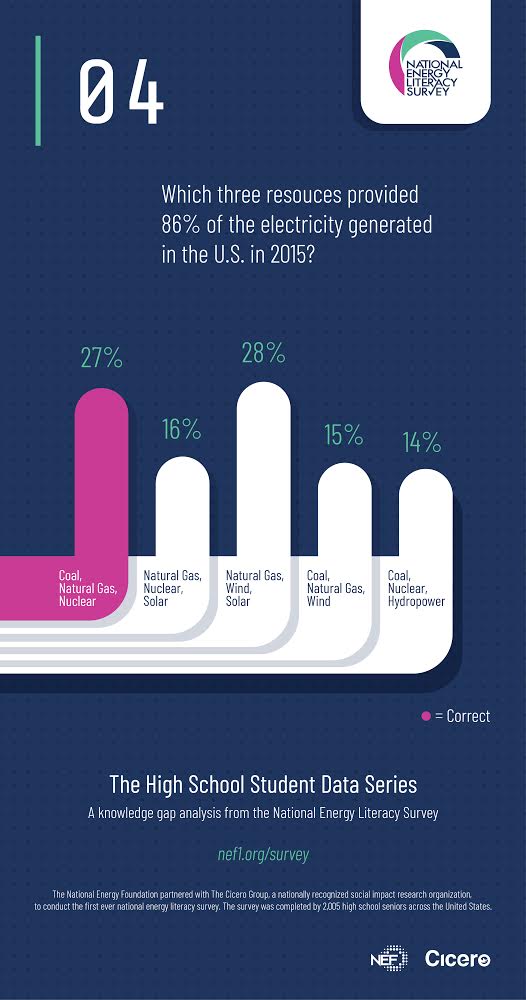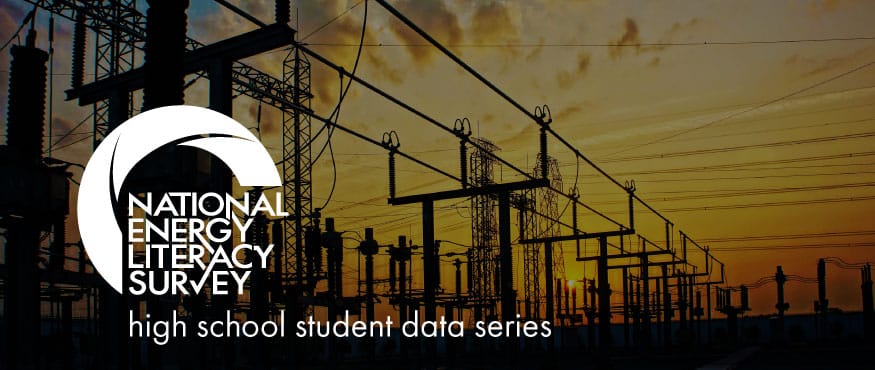Electricity generation transforms the regional fuel mix (or energy resources) into an electric charge or current.
Michael Faraday, a British scientist from the 1830’s who discovered the fundamental principles of electricity generation, would be astonished at how electricity has become central to our modern life.
Electricity generation is as simple as turning on the light and, then, as complex as the dynamic grid that carries it to our homes, schools and businesses. Electricity is a key part of modern day living. However, do most individuals understand how this electricity is sourced? The answer is no.
Survey Question: Which three resources provided 86% of the electricity generated in the U.S. in 2015?
Student Answers: 27% correct, 73% incorrect
- Coal, Natural Gas, Nuclear (27%) [CORRECT]
- Natural Gas, Nuclear, Solar (16%)
- Natural Gas, Wind, Solar (28%)
- Coal, Natural Gas, Wind (15%)
- Coal, Nuclear, Hydropower (14%)

A little less than a third of the students surveyed knew the correct answer to this electricity fuel mix question. The students’ understanding of energy resources utilized for electricity generation is at the core of this gap in knowledge. In other words, this concept is key in a student’s understanding about energy and becomes foundational in learning more about energy applications, environmental and economic impacts, and the future of energy.
Electricity Generation Fuel Mix Overhead & Below
Literally. For example, below the surface of the earth provides oil, coal, uranium and heat for geothermal electricity production. Meanwhile, above ground, biomass, water, wind and the ultimate energy producer, the sun provide energy for electricity production.
Listed below is the Fuel Mix for the US for 2017 (EIA)
2017 National Fuel Mix (preliminary)
- Coal provided 30.1 percent of our nation’s electricity.
- Natural gas supplied 31.7 percent.
- Nuclear energy produced 20.0 percent.
- Hydropower provided 7.5 percentof the supply.
- Other renewable resources, such as geothermal, solar, and wind, provided 17.1 percent.
At the same time, the electricity fuel mix by state is not constant across the country and varies by region depending on available resources. In recent years natural gas has surpassed coal in electricity production. Likewise, use of renewable sources is growing in certain regions as technologies improve. And, despite low natural gas prices and no new reactors, our reliance on nuclear power has grown and maintained.
Electricity generation is dynamic. As a result, the fuel mix used for electricity changes with availability of energy resources, the cost of energy development and the demand in energy production. Michael Faraday would be surprised by the electricity technology of today and the fuel mix that powers it.
__
During the 2016-2017 school year, NEF launched an unprecedented initiative call the National Energy Literacy Survey. The energy survey measured high school students’ knowledge, attitudes, and behaviors. For more information regarding the National Energy Literacy Survey please reach out to [email protected]


